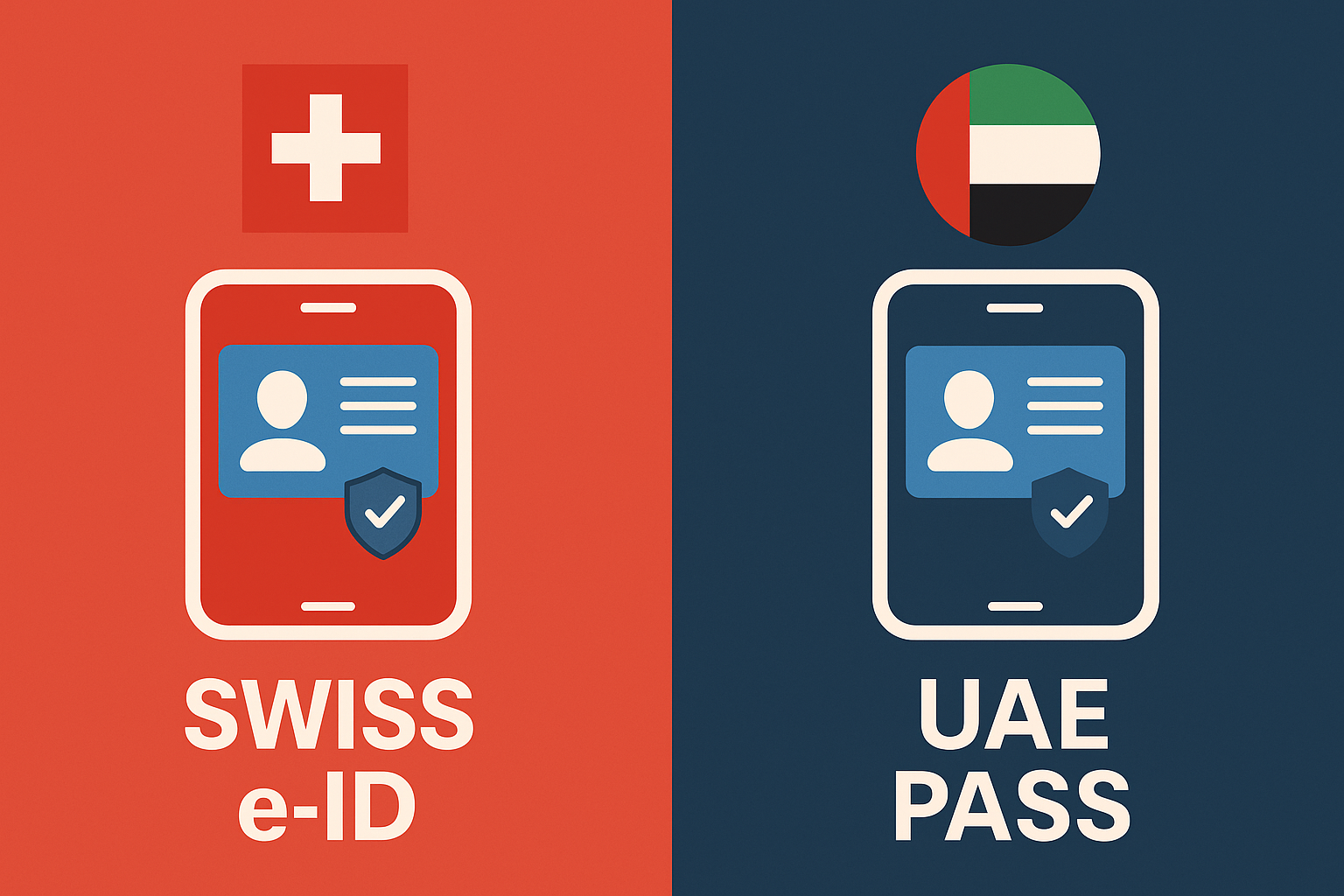Switzerland just voted for the adoption of the Swiss e-ID this is a major step forward in supporting digitalization in the country.
As we operate extensively in the UAE and Switzerland, we wanted to take a moment to compare the approaches to digital identity in both nations, to examine where each places its focus, and to highlight the risks that come with these platforms.
Quick history of the Swiss e-ID
In March 2021, Swiss voters rejected the first version of a proposed Federal Act on Electronic Identification Services. The rejection stemmed mainly from concerns around private companies managing identity services and handling personal data. Following that decision, the government and stakeholders returned to the drawing board, carried out consultations, revised the proposals with greater emphasis on state control, decentralization, and stronger data protection, and launched pilot infrastructures.
On 28 September 2025, Swiss voters narrowly approved the revised law with about 50.4 percent in favor. The law had already passed both houses of Parliament, so the referendum was the final step in Switzerland’s system of direct democracy. Implementation is planned to begin in 2026.
Quick history of UAE PASS
In 2018, the United Arab Emirates launched UAE PASS, its first national digital identity platform, as a joint initiative between the Telecommunications and Digital Government Regulatory Authority, Digital Dubai, and the Abu Dhabi Digital Authority. The goal was to create a unified, secure, and legally recognized identity solution that could replace multiple logins across government and private sector services.
Since its launch, UAE PASS has gone through several phases of development, including Emirates ID based onboarding, strong mobile device cryptography, and biometric verification. Over time, it evolved from a government login tool into a comprehensive ecosystem. Today it supports single sign on across thousands of services, enables legally binding qualified digital signatures, and offers a digital vault for storing and sharing official documents. It is continuously updated in line with international standards, in particular ETSI for electronic signatures, and has become a central pillar of the UAE’s digital transformation. By 2025, UAE PASS is mature and widely adopted, forming the backbone of trusted e government and e business transactions across the country.
Comparison of the two approaches
Both systems are officially government issued identities, but their objectives, functions, and technical foundations are very different.
Swiss e-ID emphasizes privacy-preserving attribute proofs, decentralized verification with minimal central logging, and alignment with Verifiable Credentials standards. It is designed for least-privilege data sharing and strong privacy protection.
UAE PASS focuses on production maturity, broad single sign on federation, and qualified electronic signatures aligned with ETSI standards. It is designed for high-assurance onboarding, banking, and contractual workflows at national scale.
Cryptography and protocol design
Swiss e-ID: The system is built on Verifiable Credentials, Selective Disclosure, and Decentralized Identifiers. These allow attribute-minimized proofs, such as confirming you are over 18 or that you live in a specific canton, without exposing full personal data. Registries validate issuer keys without constant central calls, reducing correlation and enabling offline-capable checks.
UAE PASS: UAE PASS relies on Public Key Infrastructure with qualified trust services governance. Keys are stored in secure elements on the device and backed by hardware security modules on the server side. This design supports high-assurance document signing and robust customer identification.
Privacy model
Swiss e-ID: Explicitly optimized for unlinkability through selective disclosure, pairwise identifiers, and registry-based key discovery. This makes it a strong fit for privacy-sensitive use cases and aligns with the European digital wallet ecosystem.
UAE PASS: Excels at single sign on convenience and broad coverage, but its centralized identity provider model means data minimization and retention must be carefully enforced to prevent correlation across services.
Electronic signature capabilities
UAE PASS: Provides integrated qualified digital signatures and verification flows, fully aligned with ETSI standards. Oversight is managed by the Telecommunications and Digital Government Regulatory Authority, with trust marks and approved service providers.
Swiss e-ID: Primarily an identity and credential layer. Qualified electronic signatures are available but are delivered by separate trust service providers under existing legal frameworks.
A common weakness
Both systems rely on the security of the smartphone. This creates an unavoidable dependency. If the device is compromised, the identity cannot be more secure than the operating system itself. Malware targeting iOS and Android is growing rapidly, and many users continue to run outdated versions of these platforms that are riddled with vulnerabilities.
Conclusion
What truly matters in the evolution of digital identity is not only the technology but the governance choices and the societal contract they reflect. Switzerland’s model highlights the value of decentralization and privacy preservation, while the UAE demonstrates how scale and integration can accelerate national digital transformation. Both approaches reveal that digital identity is no longer a back-office utility but a strategic asset that touches trust in government, competitiveness of economies, and resilience of societies. For leaders, the key question is how to harness the efficiency of digital identity while ensuring it remains anchored in transparency, accountability, and long-term public trust.
Digital identity will simplify our lives, enable new business opportunities, and reduce the burden of many administrative tasks. At the same time, it introduces new risks. As a society, we need to understand these risks, design effective mitigation strategies, and be prepared to live with a level of residual risk.



